- Home
- Joyce Carol Oates
In Rough Country: Essays and Reviews Page 2
In Rough Country: Essays and Reviews Read online
Page 2
I was sick—sick unto death with that long agony; and when they at last unbound me, and I was permitted to sit, I felt that my senses were leaving me. The sentence—the dread sentence of death—was the last of distinct accentuation which reached my ears. [“The Pit and the Pendulum”]
In fact it is not merely “I” but an accursed collective “we” of whom Poe speaks:
We stand upon the brink of a precipice. We peer into the abyss—we grow sick and dizzy. Our first impulse is to shrink from the danger. Unaccountably we remain…[For] we now the most vividly desire it. And because our reason violently deters us from the brink, therefore, do we the most impetuously approach it. [“The Imp of the Perverse”]
(How I identified with such peculiar epiphanies, though I’d never seen an abyss, let alone peered into it; let alone felt myself drawn to its brink! Yet I felt the same sympathy reading this Poe story that I would feel years later reading Dostoyevsky’s Notes from the Underground and the terrifying prophetic tales of Franz Kafka imagined in the years before the Holocaust—a sense of kinship, a predilection for uttering the truth that “will not be comforted.”)
Though Poe’s prose and poetry are saturated with a kind of high-voltage Gothic sexuality, in fact Poe’s men—and women—(a single female-type)—are asexual as mannequins. They never touch one another—or, if they do, their touch isn’t caressing or provocative but, as in “The Fall of the House of Usher,” fatal as a cobra’s bite. As a literary sensibility, Poe was unapologetically sexist: famous—or infamous—for having stated explicitly what others assume implicitly, from the most revered Romantic poets to our tabloid cable TV news:
“Of all melancholy topics, what, according to the universal understanding of mankind, is the most melancholy?” Death—was the obvious reply. “And when,” I said, “is this most melancholy of topics most poetical?”…The answer…is obvious—“When it most closely allies itself to Beauty: the death, then, of a beautiful woman is, unquestionably, the most poetical topic in the world…” [“The Philosophy of Composition”]
A woman writer/reader is bemused to discover how very many beautiful dead or near-dead females abound in Poe’s prose and poetry—in fact, there is not a “living” female character in all of Poe, of any significance. The attraction is to the (safely) deceased female from Roderick Usher’s ghastly pale sister Madeleine—one of the “living dead”—and the vampire-like Ligeia to the more innocent child-heroine of “Annabel Lee”—inspiration for Nabokov’s obsessive pedophile Humbert Humbert of Lolita. The Gothic imagination has no interest in, not the slightest awareness of, ordinary women and men and their erotic relations, still less their relations as mature individuals in society. As a woman writer, I make no more or no less of this than it requires: we read our classic writers because they are visionary geniuses, not because they are “politically correct” or adhere in any way to shifting political/cultural sentiments.
Poe suffuses my fiction, in particular my “Gothic” fiction, in the way that Lewis Carroll suffuses my fiction, as a kind of distant model, not an immediate predecessor. Once in a playful/surreal mood, I wrote a story titled “The White Cat,” included in my Gothic fiction collection Haunted: Tales of the Grotesque (1994)—the very obverse of Poe’s famous story “The Black Cat”—for in my story, the female triumphs over the male; in Poe’s story, the male triumphs over the female, at least temporarily. And how appropriate it seemed to me, when writing my long quasi-historical novel My Heart Laid Bare (1998), a post-Modernist Gothic saga about a purely American family of confidence-men and-women, to preface it with this enigmatic quote from Poe, in 1848:
If any ambitious man have a fancy to revolutionize, at one effort, the universal world of human thought, human opinion, and human sentiment, the opportunity is his own—the road to immortal renown lies straight, open, and unencumbered before him…. All that he has to do is write and publish a very little book. Its title should be simple—a few plain words—“My Heart Laid Bare.”…But this little book must be true to its title…. No man dare write it…. No man could write it, even if he dared. The paper would shrivel and blaze at every touch of the fiery pen.
Has any writer succeeded in writing such a book? I think so, yes—many writers have since Poe’s time, especially in the twentieth century when the taboo against “naturalism” in literature, as in society, began to dissolve. To name just one: James Joyce’s Ulysses, a masterly amalgam of the symbolic, the allegoric, the “realistic” and the “naturalistic.” Poe would have been astonished—and perhaps appalled.
Another curious absence in Poe is “history”—any hint in his prose fiction of a recognizable time, place, “real people.” No reader would ever guess that the author was an ambitious writer/editor steeped in the cultural and political turbulence of his time, determined to be a successful magazine editor of such popular magazines as Burton’s Gentleman’s Magazine and Graham’s Magazine as well as a best-selling writer with a worldwide audience of readers; that, as one associated with the Old South, he scorned mere “regional” writing, and never dealt with a single “southern” issue (like slavery) in his work. One could never guess from the frenetic obsessions of Poe’s poetry and prose that here was a thoroughly “professional”—if not a “hack”—writer who’d written hundreds of reviews of mediocre and long-forgotten books for such journals as the Southern Literary Messenger and essays with such pedantic titles as “The Poetic Principle” and “The Philosophy of Composition” (“Beauty is the sole legitimate province of the poem”—“Melancholy is…the most legitimate of all the poetical tones”). Except in surreal distorted forms Poe’s actual, autobiographical life is missing from his work, along with what might be called “historical context”—though Poe lived in New York City, Philadelphia, and Richmond, Virginia, during the Mexican War (1846–1848), the rise of the virulent “patriotic” movement called the Know-Nothings (whose anti-Catholic/anti-immigrant platform in 1844 featured proposals to ban all naturalized citizens from public office and to extend the waiting time for citizenship to twenty-one years), and the imperialist incursions of Manifest Destiny, not to mention the enslavement of hundreds of thousands of abducted Africans in the southern states, there isn’t a glimmer of any of these issues in his work.
In this, Poe resembles his younger contemporary Emily Dickinson, whose poetry is similarly timeless and “ahistoric,” though Poe was far from being otherworldly or reclusive like Dickinson. Of the thousands—millions?—of speculative critical remarks inspired by Edgar Allan Poe perhaps the most insightful is that of a fellow “outlaw” writer of the twentieth century, D. H. Lawrence:
Moralists have always wondered helplessly why Poe’s “morbid” tales need have been written. They need to be written because old things need to die and disintegrate, because the old white psyche has to be gradually broken down before anything else can come to pass…Poe had a pretty bitter doom. [“Edgar Allan Poe,” Studies in Classic American Literature]
Is this true? Is art a kind of catharsis, with the power to transform culture? We no longer believe this, if we ever did, for art has come to seem to us a phenomenon of the solitary individual, and not the collective, for whom politics has become all-engulfing as a state religion. But it is surely true, Edgar Allan Poe had a “pretty bitter doom”—from which, in his bravely imagined art, he seems never to have wavered.
THE WOMAN IN WHITE: EMILY DICKINSON AND FRIENDS
A Summer of Hummingbirds: Love, Art, and Scandal in the Intersecting Worlds of Emily Dickinson, Mark Twain, Harriet Beecher Stowe, and Martin Johnson Heade
by Christopher Benfey
White Heat: The Friendship of Emily Dickinson & Thomas Wentworth Higginson
by Brenda Wineapple
The Riddle we can guess
We speedily despise.
—EMILY DICKINSON (#1220)
A mysterious “confluence of hummingbirds” is the starting point for Christopher Benfey’s engagingly impressionistic work of literary and cultural cri
ticism, focusing on the summer of 1882 when Americans as gifted and temperamentally disparate as Emily Dickinson, Thomas Wentworth Higginson, Harriet Beecher Stowe and Henry Ward Beecher, and Mabel Todd and Martin Johnon Heade seem to have become “fanatical” about hummingbirds:
They wrote poems and stories about hummingbirds; they painted pictures of hummingbirds; they tamed wild hummingbirds and collected stuffed hummingbirds; they set music to the humming of hummingbirds; they waited impatiently through the winter months for the hummingbirds’ return.
In addition to what Benfey calls his “motley assemblage” of dramatis personae he has also included Mark Twain, Henry James, John Greenleaf Whittier, the capitalist investor Henry Morrison Flagler and the suffragette activist Victoria Wood-hull, and the twentieth century artist Joseph Cornell; there is even room in this leisurely constructed narrative for an exploration and exegesis of the Gilded Age phenomenon of the lavish “hotel-world” of South Florida. As if to suggest an aestheticism seemingly at odds with our more customary sense of American pragmatism and Puritanism, Benfey begins his book with a curious epigraph from John Ruskin—
I have wasted my life with mineralogy, which has led to nothing. Had I devoted myself to birds, their life and plumage, I might have produced something myself worth doing. If I could only have seen a hummingbird fly, it would have been an epoch in my life.
—and he includes in his final chapter a passage of adulatory prose from Henry James describing the gigantic Hotel Ponce de Leon in St. Augustine, in 1905, by all reports a bizarre Disneyland of conspicuous consumption:
It is difficult to render the intensity with which one feels the great sphere of the hotel close round one, covering one in as with high shining crystal walls, stretching out beneath one’s feet an immeasurable polished level, revealing itself as, for the time, for the place, the very order of nature and the very form, the only one, of the habitable world.
All of which is to argue, the reader surmises, that the post–Civil War/pre–World War I America of which Benfey writes bears a significant relationship to fin de siècle English culture, and that the individuals whom Benfrey discusses—Emily Dickinson, for one, of whom it’s said by her sister-in-law neighbor Susan Dickinson that the reclusive Amherst poetess had not “any idea of morality”—are aesthetic epicureans of a sort, finding profound meaning in “routes of evanescence” unexpectedly akin to the Pateresque ideal of burning with a hard gem-like flame.
Christopher Benfey, poet, critic, and professor of literature at Mount Holyoke, whose previous critical works include Emily Dickinson and the Problem of Others (1984), Emily Dickinson: Lives of a Poet (1986), The Double Life of Stephen Crane (1994), The Great Wave: Gilded Age Misfits, Japanese Eccentrics, and the Opening of Old Japan (2004), and most recently American Audacity: Literary Essays North and South (2007), has constructed an intricately woven bird’s nest of a book arguing that the “seismic upheaval” of the Civil War and its protracted aftermath precipitated a psychic crisis in the national consciousness as Americans tried to retain traditional beliefs, values, and conventions in the face of ever-shifting new social, political, and racial realities. Both during and after the war, Benfey speculates, Americans “gradually left behind a static view of existence, a trust in fixed arrangements and hierarchies”:
In science and in art, in religion and in love, they came to see a new dynamism and movement in their lives, a brave new world of instability and evanescence…(A) dynamism…(that) found perfect expression in the hummingbird.
And the hummingbird as a creature of mysterious otherworldly beauty is most brilliantly evoked by the watercolors of Martin Johnson Heade—see Heade’s masterpiece “Cattleya Orchid and Three Brazilian Hummingbirds,” 1871, which Benfey discusses in detail—and the poetry of Emily Dickinson—see the riddlesome poem indexed as #1463, which Benfey calls the poet’s “signature poem” since Dickinson frequently sent it to correspondents and sometimes signed it “Humming-Bird”—“as though she herself were its evanescent subject.”
A Route of Evanescence
With a revolving Wheel—
A Resonance of Emerald—
A Rush of Cochineal—
And every Blossom on the Bush
Adjusts its tumbled Head—
The mail from Tunis, probably,
An easy Morning’s Ride—
(c. 1879)
A Summer of Hummingbirds is richly populated by eccentric personalities in addition to Dickinson and Higginson: the itinerant and obsessive Martin Heade, one of the greatest of nineteenth-century nature painters, who yearned to evoke a kind of New World Eden in his highly stylized, symbolic paintings; the beautiful and uninhibited Mrs. Mabel Loomis Todd, whom Heade loved at a distance, and who conducted a scandalous love affair virtually in public, in staid Amherst, Massachusetts, with the older brother of Emily Dickinson; the flamboyant hedonist preacher Henry Ward Beecher of whom Benfey says admiringly that he was “drawn to things that flickered and flashed…He liked to tell people that he was intoxicated by art” and Beecher’s Christian-messianic sister Harriet Beecher Stowe, famous as the author of Uncle Tom’s Cabin but the author as well of a curious book-length polemic titled Lady Byron Vindicated (1869). More a skeptical observer than a participant of the genteel cultural scene, Mark Twain emerges intermittently in Benfey’s narrative as a kind of measuring-rod for the author: the most famous writer of his time and yet harshly judged by such envious New Englanders as Higginson, who claimed to have found Twain “something of a buffoon,” and an anonymous critic for a local Amherst newspaper who, after Twain lectured in Amherst to a large audience, reported: “As a lecturer we are of the opinion that he is a first-class failure.”
Though A Summer of Hummingbirds thrums with the interlocking tales of these idiosyncratic individuals, with inspired vignettes and gossipy asides, and the author’s prevailing Olympian perspective, in a manner to suggest Louis Menand’s The Metaphysical Club: A Story of Ideas in America (2002), at the core of the story Benfey finds so intriguing is an impassioned portrait of Emily Dickinson—what might be called Dickinson’s most inward and erotic self, of which Benfey has written in such earlier essays as “The Mystery of Emily Dickinson” (in American Audacity), and here attaches to the “route of evanescence” that finds its ideal expression in the hummingbird. It isn’t just that Dickinson is the most original and provocative of the individuals in Benfey’s book but she remains the most enigmatic, a perennial goad to critical speculation: despite the enormous attention she has received, Dickinson “remains almost as mysterious as Shakespeare…She is part of our language without being part of our history” (Emily Dickinson: Lives of a Poet). As Brenda Wineapple concedes with disarming candor at the midway point in her wonderfully evocative double portrait of Dickinson and Dickinson’s friend/editor/“Master” Colonel Thomas Wentworth Higginson, White Heat:
Emily Dickinson stops my narrative. For as the woman in white, savante and reclusive, shorn of context, place, and reference, she seems to exist outside of time, untouched by it. And that’s unnerving. No wonder we make up stories about her, about her lovers, if any, or how many or why she turned her back on ordinary life and when she knew the enormity of her own gift (of course she knew) and how she combined words in ways we never imagined and wish we could.
As Benfey’s subtitle suggests, for all its shimmering web of interlocking ideas, the “scandal” of Eros is the driving force here, culminating in two seemingly ecstatic adulterous relationships—the affair of the most famous Protestant preacher of his era, Reverend Henry Ward Beecher, and one of his female admirers, Mrs. Elizabeth Tilton—“The biggest sex scandal in the history of American religion,” as Benfey breathlessly notes—which resulted in a highly publicized adultery trial in 1874; and the remarkably protracted affair of Emily Dickinson’s brother Austin and the much younger Mrs. Mabel Loomis Todd, the wife of an Amherst College astronomy professor. While Emily Dickinson’s connection with the dashing Reverend Beecher was slight, Dickinson
was well aware of her brother’s longtime affair with Mrs. Todd and seems to have been, with her sister Vinnie, in some way a confidante of the illicit lovers who used the Homestead, the Dickinson family house, for their trysts. And there were Emily Dickinson’s shadow-lovers, among them the “Master” to whom Dickinson alludes tantalizingly in numerous poems, and the Massachusetts Supreme Court justice Otis Lord, Dickinson’s elder by eighteen years and a “crusty conservative” who emerges in Dickinson’s life after the death of Dickinson’s father, as a source of solace and affection, even as possible fiancé.1 Unhappily for Dickinson, the one man who seems to have unequivocally loved her and may have wished to marry her died of a stroke in 1884, before anything like a formal engagement was announced. Broken in spirit by this loss, as by numerous others including the terrible typhoid death of a beloved little nephew, Dickinson herself grew ill and died in 1886, at the age of fifty-five.
Benfey locates in the poetry of Dickinson’s younger years an obsession with Lord Byron—Byron’s famous poem “The Prisoner of Chillon” becomes “the Rosetta stone of (Dickinson’s) tortured destiny”—and a frankly sexual undertone to Dickinson’s elliptically imagistic poetry of the 1860s:
I tend my flowers for thee—
Bright Absentee!
My Fuschzia’s Coral Seams
Rip—while the Sower—dreams—
Geraniums—tint—and spot—
Low Daisies—dot—
My Cactus—splits her Beard
To show her throat—
(339, c. 1862)
The passive female being is overcome—seemingly ravished—by the mysterious Byronic “Master” who has never been definitely named by countless biographers and commentators but whose presence in Dickinson’s most ardent poetry is unmistakable:

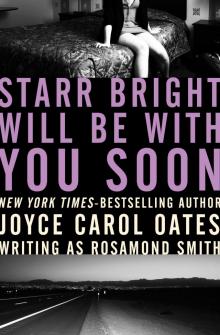 Starr Bright Will Be With You Soon
Starr Bright Will Be With You Soon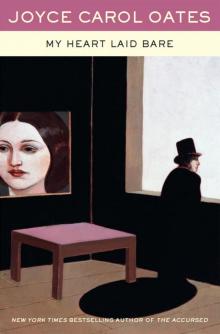 My Heart Laid Bare
My Heart Laid Bare A Fair Maiden
A Fair Maiden The Doll-Master and Other Tales of Terror
The Doll-Master and Other Tales of Terror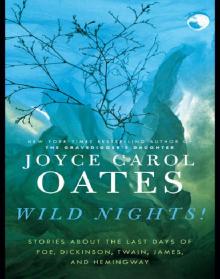 Wild Nights!: Stories About the Last Days of Poe, Dickinson, Twain, James, and Hemingway
Wild Nights!: Stories About the Last Days of Poe, Dickinson, Twain, James, and Hemingway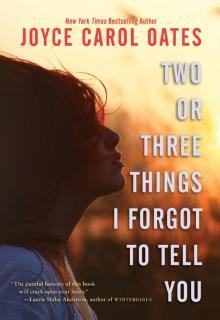 Two or Three Things I Forgot to Tell You
Two or Three Things I Forgot to Tell You Because It Is Bitter, and Because It Is My Heart
Because It Is Bitter, and Because It Is My Heart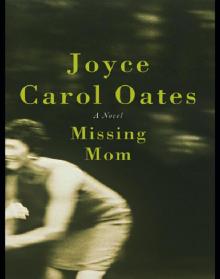 Missing Mom: A Novel
Missing Mom: A Novel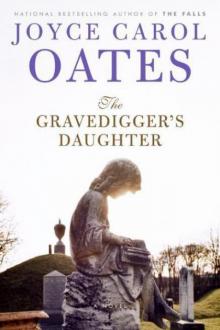 The Gravedigger's Daughter: A Novel
The Gravedigger's Daughter: A Novel American Appetites
American Appetites Black Dahlia White Rose: Stories
Black Dahlia White Rose: Stories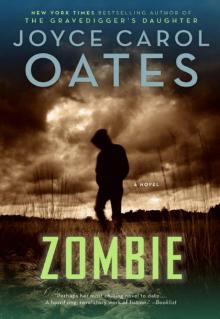 Zombie
Zombie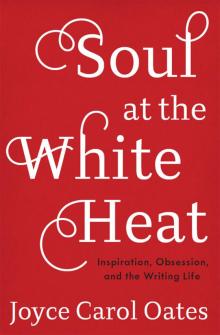 Soul at the White Heat: Inspiration, Obsession, and the Writing Life
Soul at the White Heat: Inspiration, Obsession, and the Writing Life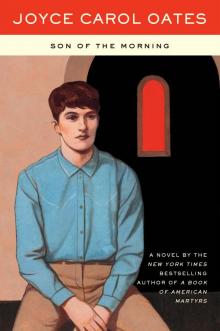 Son of the Morning
Son of the Morning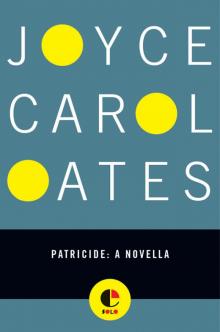 Patricide
Patricide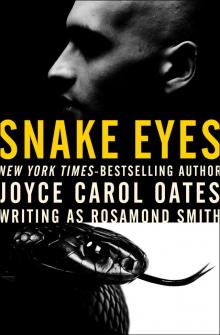 Snake Eyes
Snake Eyes Wonderland
Wonderland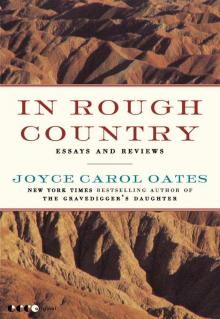 In Rough Country: Essays and Reviews
In Rough Country: Essays and Reviews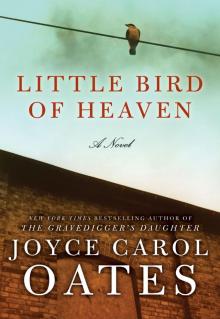 Little Bird of Heaven
Little Bird of Heaven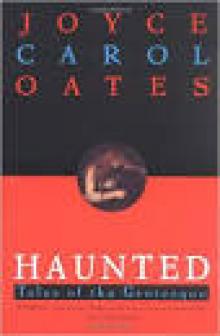 The Haunting
The Haunting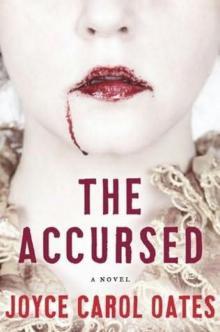 The Accursed
The Accursed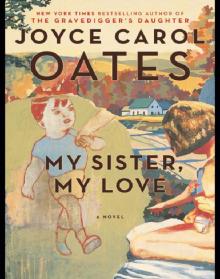 My Sister, My Love: The Intimate Story of Skyler Rampike
My Sister, My Love: The Intimate Story of Skyler Rampike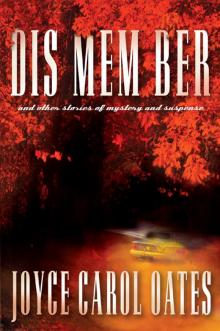 Dis Mem Ber and Other Stories of Mystery and Suspense
Dis Mem Ber and Other Stories of Mystery and Suspense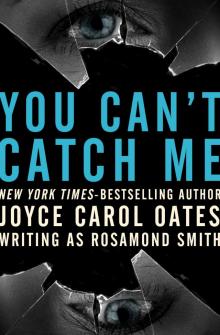 You Can't Catch Me
You Can't Catch Me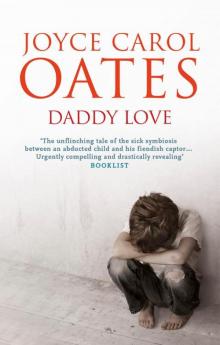 Daddy Love: A Novel
Daddy Love: A Novel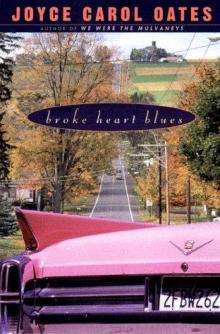 Broke Heart Blues
Broke Heart Blues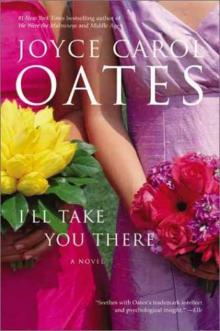 I'll Take You There
I'll Take You There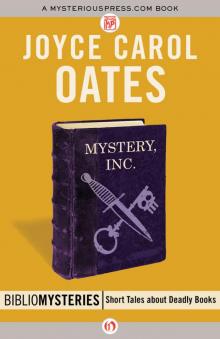 Mystery, Inc.
Mystery, Inc. We Were The Mulvaneys
We Were The Mulvaneys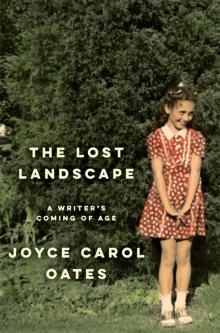 The Lost Landscape: A Writer's Coming of Age
The Lost Landscape: A Writer's Coming of Age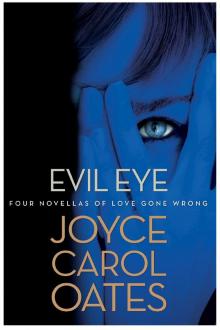 Evil Eye: Four Novellas of Love Gone Wrong
Evil Eye: Four Novellas of Love Gone Wrong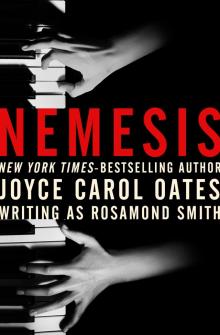 Nemesis
Nemesis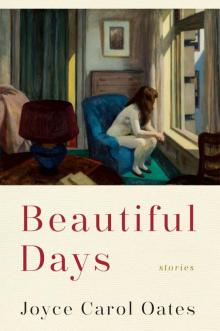 Beautiful Days: Stories
Beautiful Days: Stories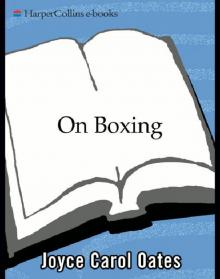 On Boxing
On Boxing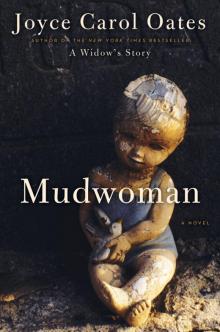 Mudwoman
Mudwoman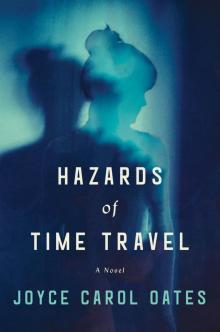 Hazards of Time Travel
Hazards of Time Travel Night-Gaunts and Other Tales of Suspense
Night-Gaunts and Other Tales of Suspense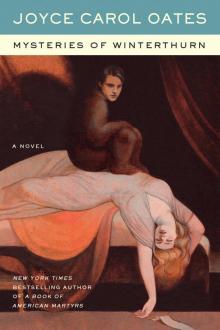 Mysteries of Winterthurn
Mysteries of Winterthurn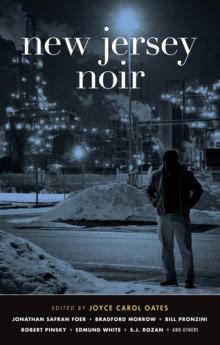 New Jersey Noir
New Jersey Noir Sourland
Sourland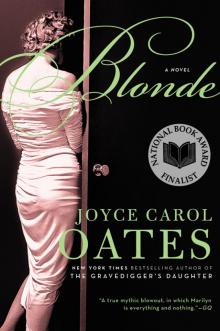 Blonde
Blonde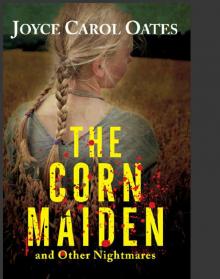 The Corn Maiden: And Other Nightmares
The Corn Maiden: And Other Nightmares The Oxford Book of American Short Stories
The Oxford Book of American Short Stories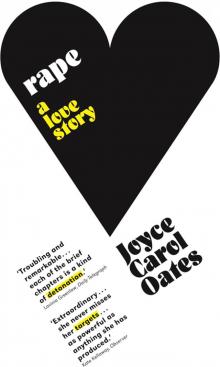 Rape: A Love Story
Rape: A Love Story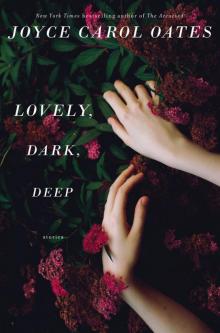 Lovely, Dark, Deep: Stories
Lovely, Dark, Deep: Stories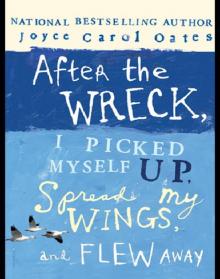 After the Wreck, I Picked Myself Up, Spread My Wings, and Flew Away
After the Wreck, I Picked Myself Up, Spread My Wings, and Flew Away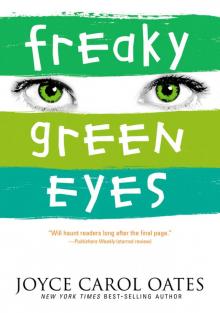 Freaky Green Eyes
Freaky Green Eyes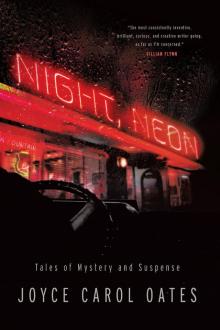 Night, Neon
Night, Neon I Am No One You Know: And Other Stories
I Am No One You Know: And Other Stories Black Water
Black Water Expensive People
Expensive People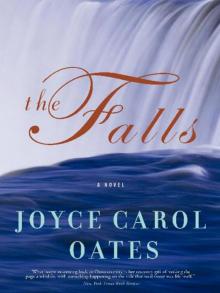 The Falls
The Falls Soul/Mate
Soul/Mate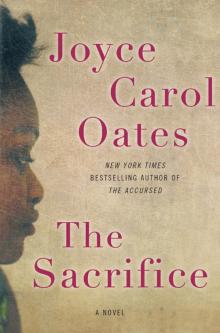 The Sacrifice
The Sacrifice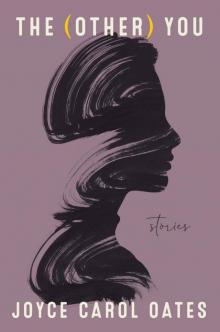 The (Other) You
The (Other) You What I Lived For
What I Lived For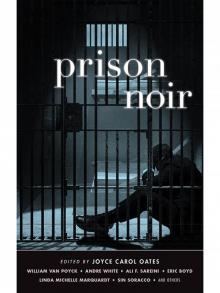 Prison Noir
Prison Noir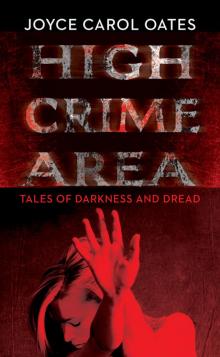 High Crime Area: Tales of Darkness and Dread
High Crime Area: Tales of Darkness and Dread Faithless: Tales of Transgression
Faithless: Tales of Transgression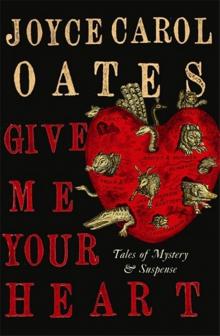 Give Me Your Heart: Tales of Mystery and Suspense
Give Me Your Heart: Tales of Mystery and Suspense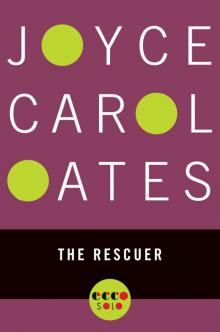 The Rescuer
The Rescuer A Book of American Martyrs
A Book of American Martyrs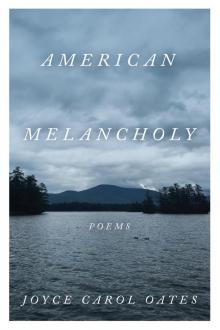 American Melancholy
American Melancholy Double Delight
Double Delight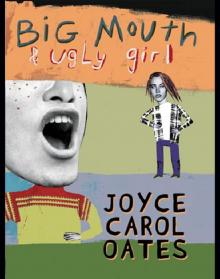 Big Mouth Ugly Girl
Big Mouth Ugly Girl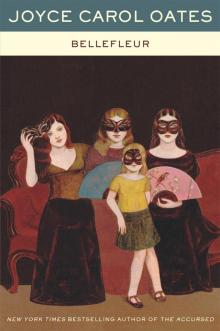 Bellefleur
Bellefleur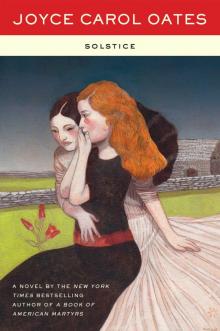 Solstice
Solstice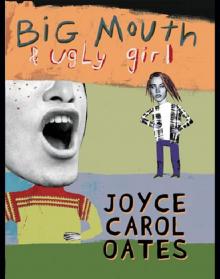 Big Mouth & Ugly Girl
Big Mouth & Ugly Girl Evil Eye
Evil Eye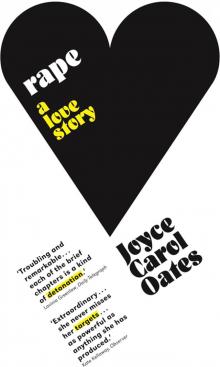 Rape
Rape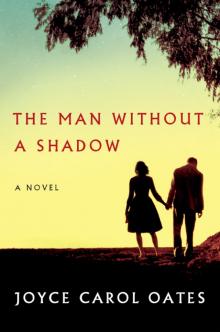 The Man Without a Shadow
The Man Without a Shadow Missing Mom
Missing Mom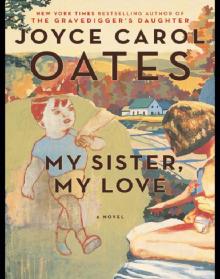 My Sister, My Love
My Sister, My Love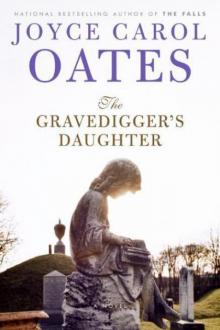 The Gravedigger's Daughter
The Gravedigger's Daughter Beautiful Days
Beautiful Days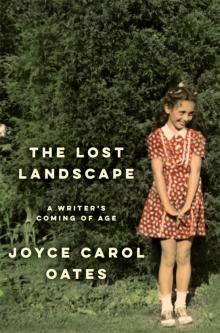 The Lost Landscape
The Lost Landscape Daddy Love
Daddy Love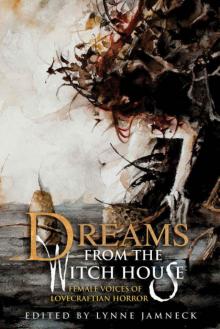 Dreams from the Witch House: Female Voices of Lovecraftian Horror
Dreams from the Witch House: Female Voices of Lovecraftian Horror The Tattooed Girl
The Tattooed Girl Give Me Your Heart
Give Me Your Heart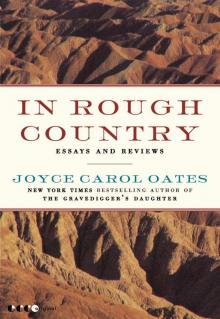 In Rough Country
In Rough Country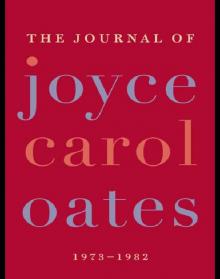 The Journal of Joyce Carol Oates
The Journal of Joyce Carol Oates Black Dahlia & White Rose: Stories
Black Dahlia & White Rose: Stories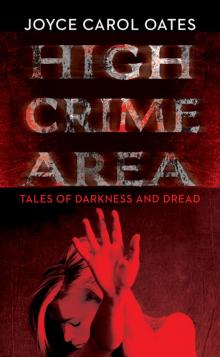 High Crime Area
High Crime Area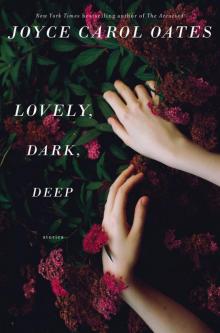 Lovely, Dark, Deep
Lovely, Dark, Deep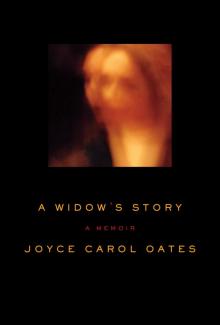 A Widow's Story
A Widow's Story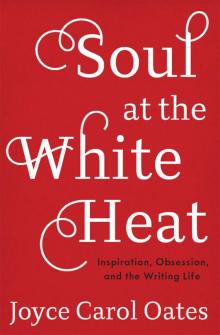 Soul at the White Heat
Soul at the White Heat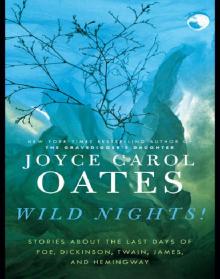 Wild Nights!
Wild Nights!